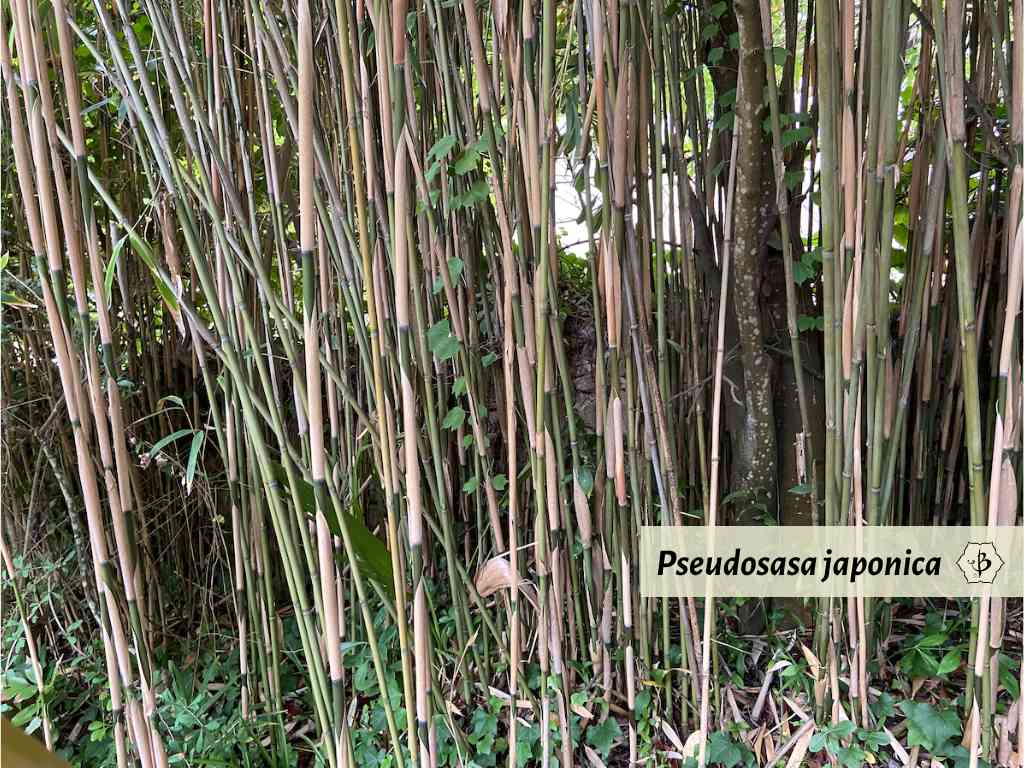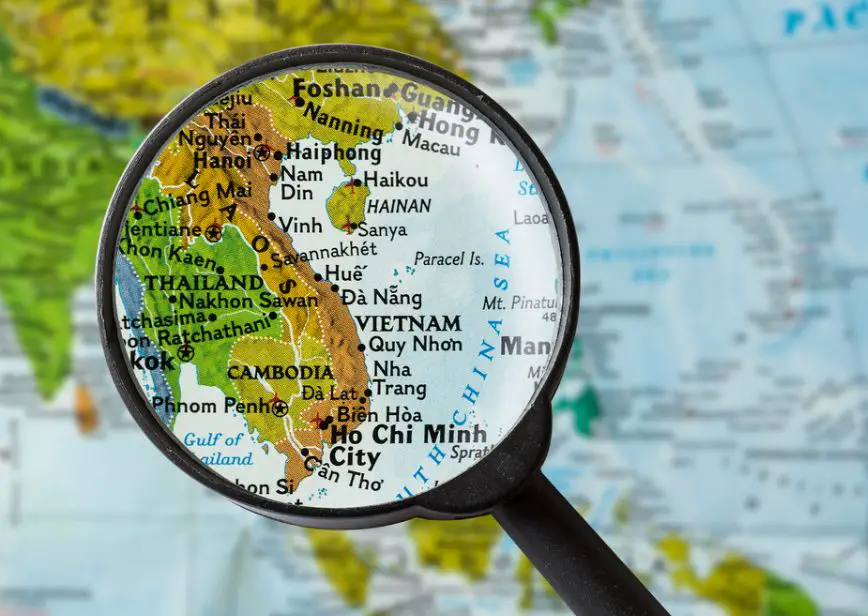Considering the endless number of uses for bamboo, and the vast number of distinct species, you could spend years trying to find the best variety of bamboo for a given project. Helpfully, some species of bamboo have earned nicknames based on their popular usage. For example, there’s Phyllostachys aurea, sometimes called “fish pole bamboo”. Then there’s Walking stick bamboo, technically known as Chimonobambusa tumidissinoda.
Pseudosasa amabilis is an East Asian species of bamboo best known for its use in traditionally crafted fly rod fishing poles. Its common name, Tonkin Bamboo, comes from its port of origin, where Southern China meets Northern Vietnam at the Gulf of Tonkin. Not as popular as an ornamental, this cold-hardy running bamboo has sporadic foliage and long-lasting culm sheaths. But the sturdy canes with their smooth, unobtrusive nodal joints are ideal for ski poles and fly rods.
This article – first published in December 2021 and most recently updated in September 2024 – is part of an ongoing series about various bamboo species. Check out some of these other links to learn more.
- Introducing Bamboo: Genus by genus
- Beema Bamboo
- Black Bamboo
- Buddha’s Belly Bamboo
- Oldham’s Bamboo
- Square Bamboo

Characteristics of Tonkin Bamboo
Native to East Asia and Southern China, Pseudosasa amabilis is a medium-sized bamboo with a running growth habit.
Naming bamboo
Commonly known as Tonkin Bamboo, this species took its nickname from the Gulf of Tonkin, where the Southern Chinese coastline meets Vietnam. From this Far Eastern port, a profusion of P. amabilis canes have set sail and circled the globe. In a similar fashion, the massive poles of Dendrocalamus strictus entered the international marketplace from Northeast India and adopted the byname Calcutta Bamboo.
Size and appearance of P. amabilis
Tonkin Bamboo is a close relative of Arrow Bamboo, or Pseudosasa japonica. With its tall, straight culms and sparse foliage, it also resembles Temple Bamboo, aka Semiarundinaria fastuosa. Tonkin Bamboo plants can reach 20 or 30 feet tall, and up to about 2 inches in diameter.
The bottom halves of the culms generally don’t have any leaves. Higher up, the leaves tend to be dark green, long and slender. The culm sheaths of fresh shoots generally stay on the culm for a long time, and they’re quite visible due to the lack of greenery.

Cultivating Pseudosasa amabilis
Like most bamboo varieties of Chinese origin, members of the genus Pseudosasa belong to the temperate tribe, Arundinarieae. That means they’re fairly cold-tolerant and have those expansive, running roots that gardeners must be wary of. They don’t spread as aggressively as some species of Phyllostachys, China’s most prevalent genus of bamboo, but root barriers are strongly recommended.
Despite the name, Tonkin Bamboo, which evokes images of jungles and rice paddies in tropical Vietnam, this is actually a more temperate species native to southern China. It’s cold-hardy down to about 10º F, meaning you can also grow it in many parts of the US, especially zones 8 and 9.
The name “amabilis” is Latin for lovely or attractive, but P. amabilis is not such a popular bamboo species as an ornamental. The canes are tall and straight, and the dense foliage is attractive and useful to create a good privacy screen. But it’s not an easy species to find in nurseries. Like Arrow Bamboo, the culm sheaths tend to stay in place, well after the shoots have reached full size and the sheaths have lost their young luster, which some gardeners may consider unattractive.

Uses for Tonkin Bamboo
If not for its ornamental beauty, Tonkin Bamboo is a great choice for those interested in crafts and construction. The straightness and hardness of the culms make it a useful species. And, most important perhaps, are the smooth nodes.
Sometimes a bulging internode is desirable, for decorative purposes, as in the case of Walking Stick Bamboo. But in other instances, the smooth and unobtrusive nodes are preferable. Consider a curtain rod, for example. Those protruding nodal joints would become a real nuisance.
Fly rod fishing poles and bamboo ski poles
The uses for Pseudosasa amabilis go well beyond simple curtain rods, however. They are best known for their use in traditional fly rod fishing poles. For this delicate construction, the hollow poles are split into long, narrow strips, and then reassembled into a long, triangle-like pole.
The shape of this pole and the intrinsic properties of the bamboo result in a fishing rod with superior properties of strength and flexibility. Several hundred years in the making, this ancient craft still persists today in some very small circles. And a well-made fly rod pole from Tonkin Bamboo can run up to several hundred dollars.

For an inside look at this exquisite craft, I highly recommend the documentary film Trout Grass. It’s a fascinating portrait of this disappearing tradition.
These distinct features of P. amabilis also make it one of the most popular species of bamboo for ski poles. Although not as pricey as the fishing poles, you can find some very high-end ski poles made with bamboo.
If not from Tonkin Bamboo, Calcutta Bamboo (Dendrocalamus strictus) is the next most common species for ski poles. D. strictus has the advantage of growing solid rather than hollow canes. But as a giant timber bamboo, it requires special cultivation methods to produce skinny poles.
Learn more
To learn more about the wide world of bamboo and its many uses and applications, check out some of these other articles.
- A to Z: 26 surprising products from bamboo
- How to make money growing bamboo
- Best bamboo species for poles
- The best clumping bamboos
FEATURE IMAGE: Pseudosasa amabilis or Tonkin Bamboo at Kew Gardens, London. Photo by Fred Hornaday.

























